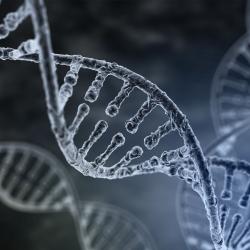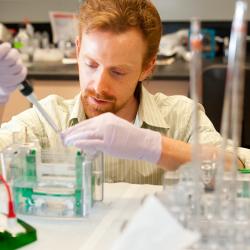
Colin P. Johnson
Colin P. Johnson
Research
It is estimated that ~ 1/4 of genes in genomes encode for membrane proteins. The Johnson lab is interested in structurally and functionally characterizing membrane proteins with a focus on calcium signaling. Specifically, we are focused on the ferlin gene family, an evolutionarily ancient set of genes which encode for a group of calcium sensing membrane proteins. Ferlins act in a broad range of physiological roles ranging from neurotransmitter release to cell repair and organismal development. Mutations in ferlin genes have been directly linked to pathologies including deafness, muscular dystrophy, and breast cancer, however the molecular-level explanation for why mutations in ferlins result in disease is unclear.
To increase our understanding of membrane proteins we are using three strategies. First, we are reconstituting membrane-related biological processes in vitro, allowing us to study protein mechanics in a defined and controlled environment. Second, we are testing protein function using knockout and rescue studies in a zebrafish model, which provide a means for us to test conclusions based on our in vitro results in a whole organism. Lastly, we are applying X-ray crystallography and NMR spectroscopy to obtain a structural basis for protein-membrane interactions.
The Johnson lab also has a long-standing interest in the development of new techniques for the study of membrane proteins. Currently we are developing genetic code expansion technology to site-specifically incorporate fluorescent unnatural amino acids that will aid in characterizing membrane proteins. In addition, we are developing and adapting sum frequency generation spectroscopy (SFG) to directly probe the structure of protein-membrane interfaces.
Education
Postdoc 2007-2011, University of Wisconsin, Madison
Postdoc 2005-2007, University of Pennsylvania
Ph.D. 2005, University of Illinois, Urbana Champaign
Awards
- College of Science Research and Innovation Seed (SciRIS) Stage 1 Award 2023
- College of Science Research and Innovation Seed (SciRIS) Individual Investigator 2022
- NIH K99 Career Transition Award 2010-2015
- IME Postdoctoral Fellow 2005-2007
- ACS analytical undergraduate student of the year 1999



